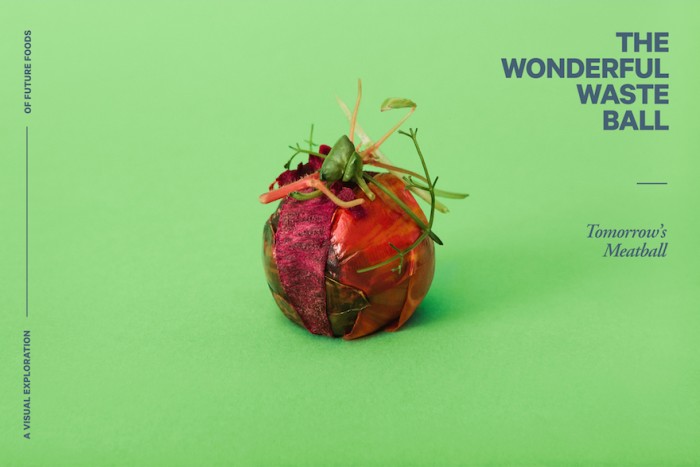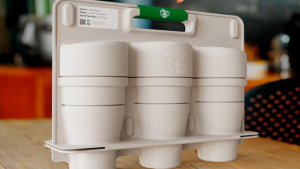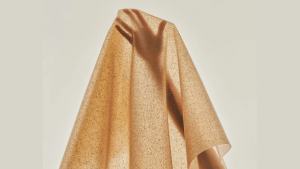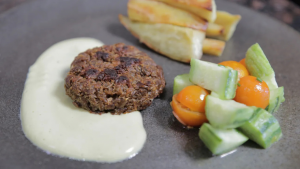Tomorrow’s Meatball is an explorative project by Bas Van de Poel and Kaave Pour from future-living lab, Space10 together with food designer and chef Simon Perez, photographer Lukas Renlund, graphic designer Karin Borring and storyteller Simon Caspersen. The project imagines what we will be eating 20 years from now after advancements in lab-grown foods, experimentations with alternative ingredients and dwindling resources in the face of a growing global population.
To communicate their vision of the future of food, the team designed a photographic series that showcases eight meatballs reimagined with futuristic ingredients such as powder, algae and insects.
In explaining the thinking behind the project, Bas van de Poel of Space10 says, “It's quite difficult to picture that in the near future we will be eating insects or artificial meat. But, with the increasing demand for food, we need to start considering adding alternative ingredients to our daily menu. You could say that Tomorrow's Meatball gets people a little more familiar with the unfamiliar.”
The Wonderful Waste Ball
Up to one third of all food is spoiled or squandered before it is consumed by people, according to UN Food and Agricultural Organisation. Food waste is prominent in the efforts to combat hunger, improve food security in the world’s poorest countries and preserving the environment. Reducing this loss is a critical step towards securing enough food for a fast-growing world population.
The Lean Green Algae Ball
Algae are the fastest growing plant organisms in nature and a great alternative source of vitamins, protein and minerals. Because of this, the mean and green aquatic plant has a lot of potential as a scalable food source, as it can be grown anywhere – often in vertical fermentation tanks – without using large amounts of land or water.
The Urban Farmer’s Ball
Urban farming is booming. More and more people nowadays are growing food as local as possible. Local food represents a serious alternative to the global food model. It reduces “food miles,” offers fresh products all-year-round, generates employment, creates greenbelts, and strengthens cities’ resilience to climate change.
The Mighty Powder Ball
Powdered food has been gathering traction lately. The meal replacement is available in both liquid and powdered forms and includes all the elements of a healthy diet: protein, carbs, unsaturated fats, alongside all the necessary vitamins and minerals. Today already, nutrient-dense products have become game changers for treating severe malnutrition in developing countries.
The 3D Printed Ball
3D food printing has the potential to save the environment, while revolutionising food production – converting alternative ingredients such as proteins from algae, beet leaves or insects into delicious meals. In addition, 3D foot printing opens the door to food customisation and personalised nutrition.
The Artificial Meatball
Artificial meat is an animal-flesh product, grown inside a laboratory. The first lab grown beef burger was presented in 2013 and cost 325 000 dollars. Today, that very same burger costs only ten dollars. Artificial meat is a viable near-future alternative to the increasingly unsustainable practice of cattle farming.
The Crispy Bug Ball
Insect eating is common to cultures in most part of the world. Over 1 000 different insect species are eaten in 80 per cent of the world's nations. Insects generally contain more protein and are lower in fat than traditional meats and have about 20 times higher food conversion efficiency – making it a viable addition to our current menu.














